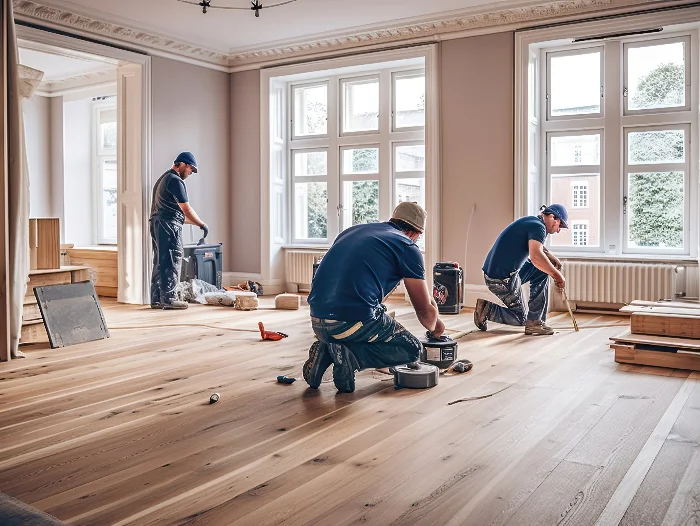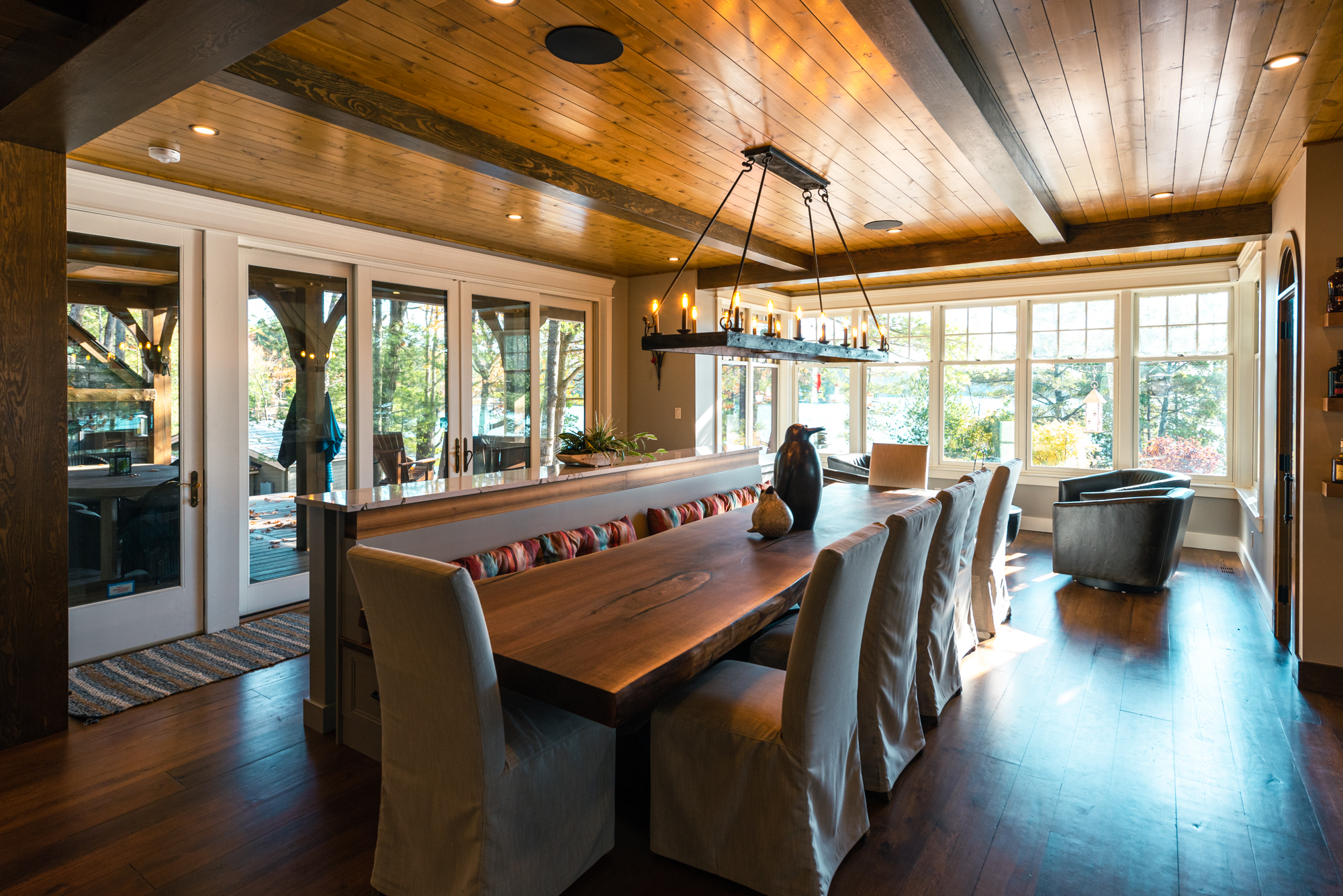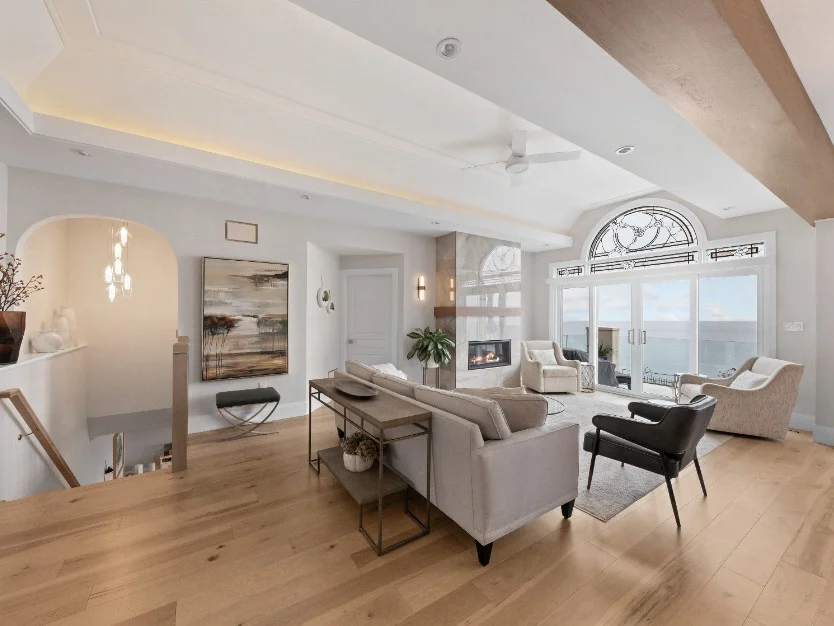Hardwood Flooring
What you need to know about choosing hardwood & engineered hardwood flooring

It’s been decades since solid hardwood was considered the ‘gold standard’ for flooring. Yes, solid hardwood has a nostalgic appeal and you certainly know exactly what you’re getting: 100% kiln-dried boards of oak or other hardwood.
Engineered hardwood is, however, simply superior. It looks just as beautiful as traditional hardwood but it’s stronger, lighter, more durable, more environmentally friendly, and far better equipped to handle moisture and humidity. For these reasons, many flooring experts no longer recommend solid hardwood for most projects.
“Engineered hardwood isn’t susceptible to expansion, contraction or warping. In many ways, it’s a superior product to traditional hardwood. And they look identical when they’re laid.”
The ‘engineering’ in engineered hardwood
The difference between engineered hardwood and solid hardwood comes down to engineering. Solid hardwood is simply a slab of wood, albeit one that starts out straight, true and intact. Engineered hardwood is a hardwood veneer called the lamella (between 1mm and 4mm) and a core made of specially-engineered plywood or composite.
These are engineered specifically for flooring and can be made from glue, wood and/or plastic and contain substantial recycled material. The lamella carries between five and nine finish coats of urethane or similar clear topcoat. This multi-layered structure is what makes engineered hardwood the clear winner in almost every scenario.

Superior durability and longevity
The core of engineered hardwood is a multi-layered plywood or high-density composite, which is far more stable than a single piece of solid wood. This design prevents the common problems associated with hardwood like warping, cupping, and cracking. This stability is especially valuable in areas where humidity fluctuates and with seasonal temperature swings, such as…North Simcoe and Georgian Bay.
Stylish and versatile
Engineered hardwood is just as beautiful as solid hardwood, but it comes with more design options. From smooth, modern finishes to rustic hand-scraped textures, you’ll find a wider range of styles, wood species, and colours. Want hickory with a natural, rustic vibe or clean, modern maple? We have an engineered hardwood for you.
Environmentally friendly
Engineered hardwood uses significantly less raw wood than solid hardwood. Instead of using a full-thickness plank of hardwood, only a thin hardwood veneer is used on top of a stable plywood or composite core. This allows manufacturers to produce far more flooring from the same amount of raw hardwood, supporting sustainable practices.
“You’re only using a one-to-three millimetre lamella laminated to a substructure. For every one solid hardwood floor, you’re producing five floors with an engineered product. And many substrates make use of recycled material. It’s a win-win.”
Resistance to moisture and humidity
The North Simcoe area fluctuates between heat and high humidity in the summer, and cold dryness in the winter, which causes hardwood to expand and contract. This causes gaps, cupping and even warping. Engineered hardwood, with its plywood core, is designed with moisture resistance in mind, making it a perfect choice for homes and cottages in our area.
Secrets to a great wood floor: subfloor preparation and expert installation
Even the best engineered hardwood on the market will fail if it’s installed on a poorly prepared subfloor. Uneven surfaces, moisture issues and improper support can cause creaks, dips, and gaps to develop in your flooring. In fact, many contractors argue that subfloor preparation is more important than the flooring itself.
“No project is perfect, and every subfloor needs work before we ever lay flooring. From sanding all the seams where plywood meets to checking for squeaks and filling dips—important work goes into each installation before a single piece of flooring ever gets laid down.”

Flat and smooth, then level
Subfloors do not need to be level, but they do need to be flat. Many buildings, especially heritage cottages, have floors off-level and that’s fine. What matters most is that the subfloor is flat and smooth. That requires eliminating dips, humps and seams can affect how planks lie and lock together. To achieve this, the Rêve team uses self-leveling compounds, grinds down high spots on concrete floors, and on occasion pull up subfloors to flatten the floor joists.
Cleanliness and moisture control are ‘musts’
For glue-down installations, which is most installations, a clean subfloor is essential. Any dust, debris or paint residue can interfere with the adhesive’s ability to bond. We will sand, vacuum and wipe down the subfloor to ensure proper adhesion. We also look for sources of moisture.
Even though engineered hardwood is more resistant to moisture than solid hardwood, it’s still essential to address subfloor moisture. If the subfloor is too wet, say a concrete floor in a basement, it can affect the adhesive and cause long-term damage. In such cases, we use moisture barriers and/or vapour-retardant adhesives to protect the planks from sub-floor moisture.
What are the best engineered hardwood brands?
This is a question we get a lot, especially in context of wear. Since all of the brands we carry are well-established, bigger engineered hardwood flooring companies, they all offer products with highly scratch- and abrasion-resistant finishes. But no wood floor will stand up to severe or repeated abrasion, for example. You can’t play ice hockey in the living room or have a big dog scratching in front of the door every day and expect your
hardwood to remain pristine forever. Should you experience such an issue, we can offer a number of solutions, including spot-refinishing and swapping out plank in the affected area.
You will find that pre-finished hardwood, which carries many factory-applied protective topcoats, wears better than any finish that can be applied on-site. The difference in pricing between brands and lines is not really indicative of wear-resistance; it reflects the type of wood, clearness/detail of the wood, the thickness of the lamella (which has never been an issue!) and the kind of finishing applied.

Installation methods for engineered hardwood
There are several ways to install engineered hardwood, and the right method depends on the product, subfloor, and the environment. Here are the different methods that we use:
“The best installation is a full glue spread. It’s just like a tile bed, where you would spread mortar, but a much thinner application of special flooring glue. It also acts as a vapor barrier between concrete and engineered hardwood.”
Nail-down installation
This method is used for planks under 5 inches wide. Nails are driven through the tongue of each board at an angle, securing it into place.
Nail-glue assist
For planks wider than 5 inches, we use a nail-glue assist to prevent decoupling. Glue is applied in addition to nails, providing a more secure bond.
Full glue-down
This premium option uses a full spread of adhesive to bond the planks to the subfloor. It offers maximum stability, reduces sound, and acts as a vapor barrier. This is the preferred method when installing on concrete.
With the right prep, engineered hardwood makes for a floor that’s beautiful, durable, and ready for whatever your household throws at it.



